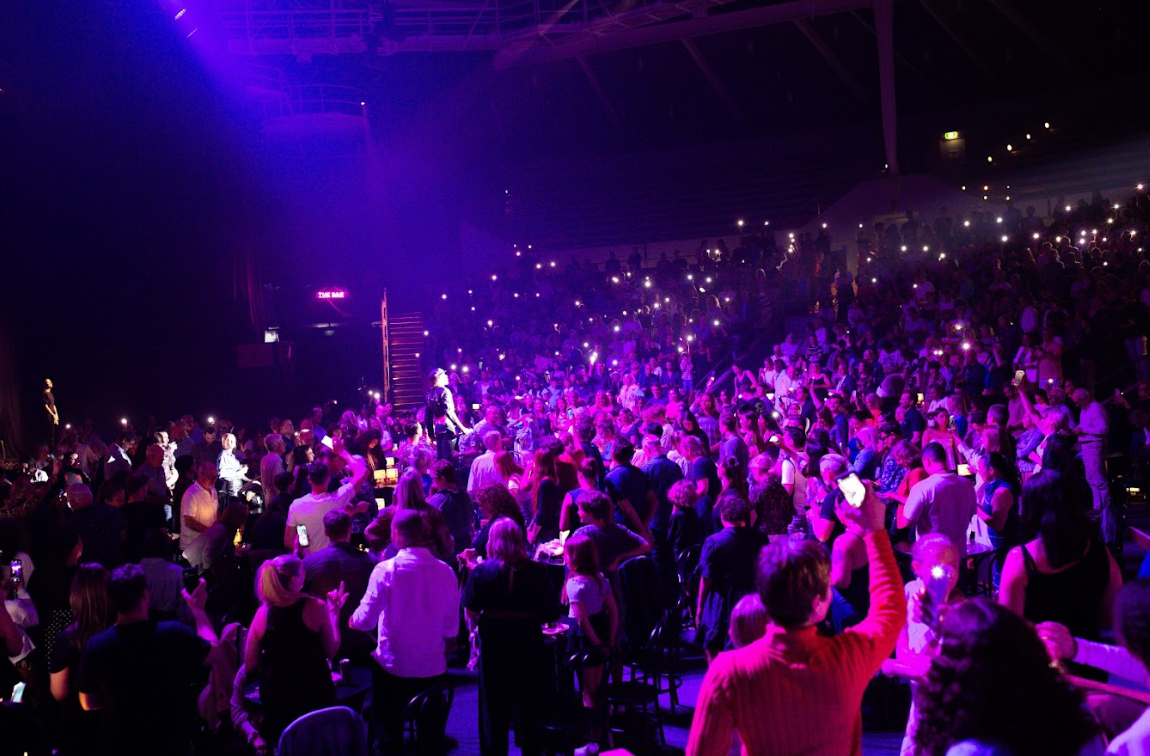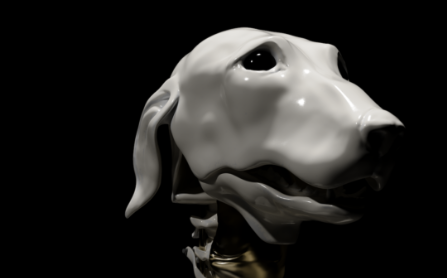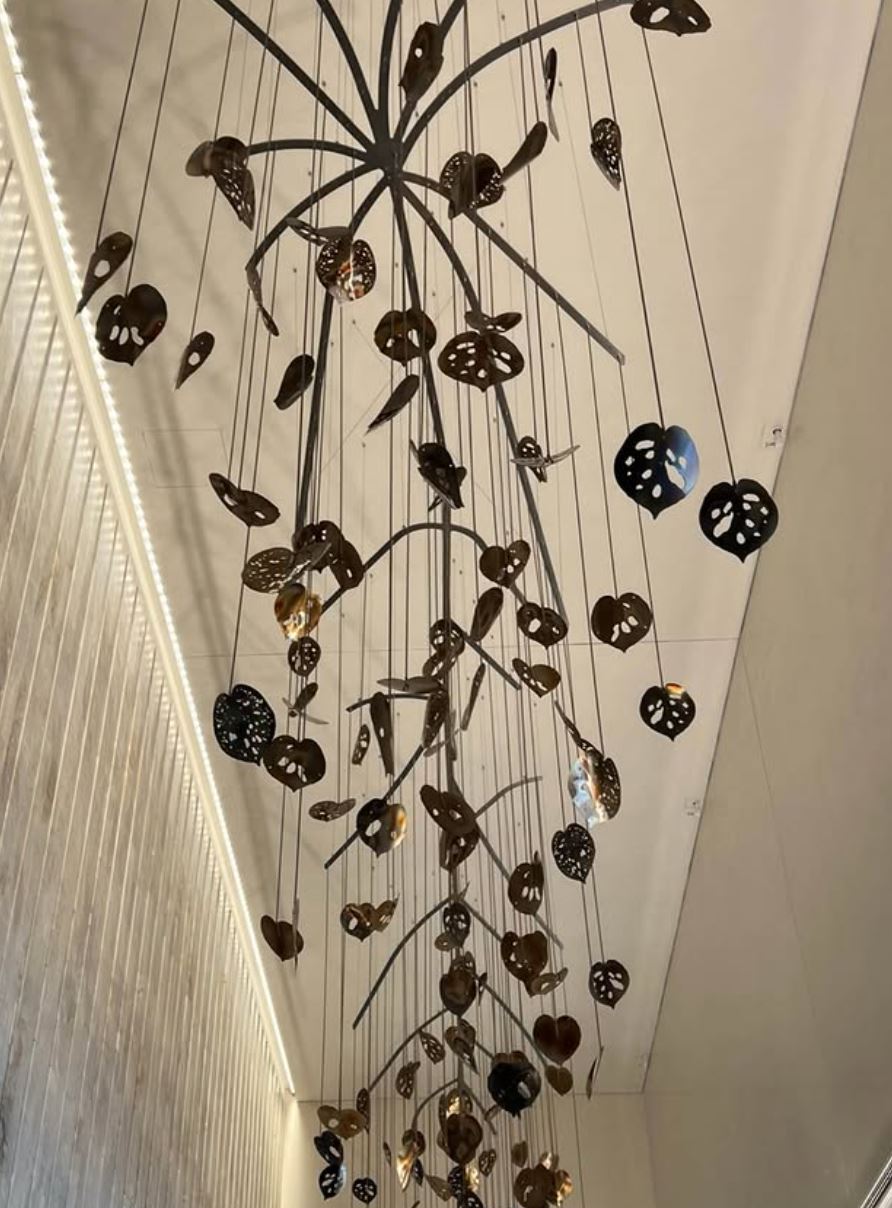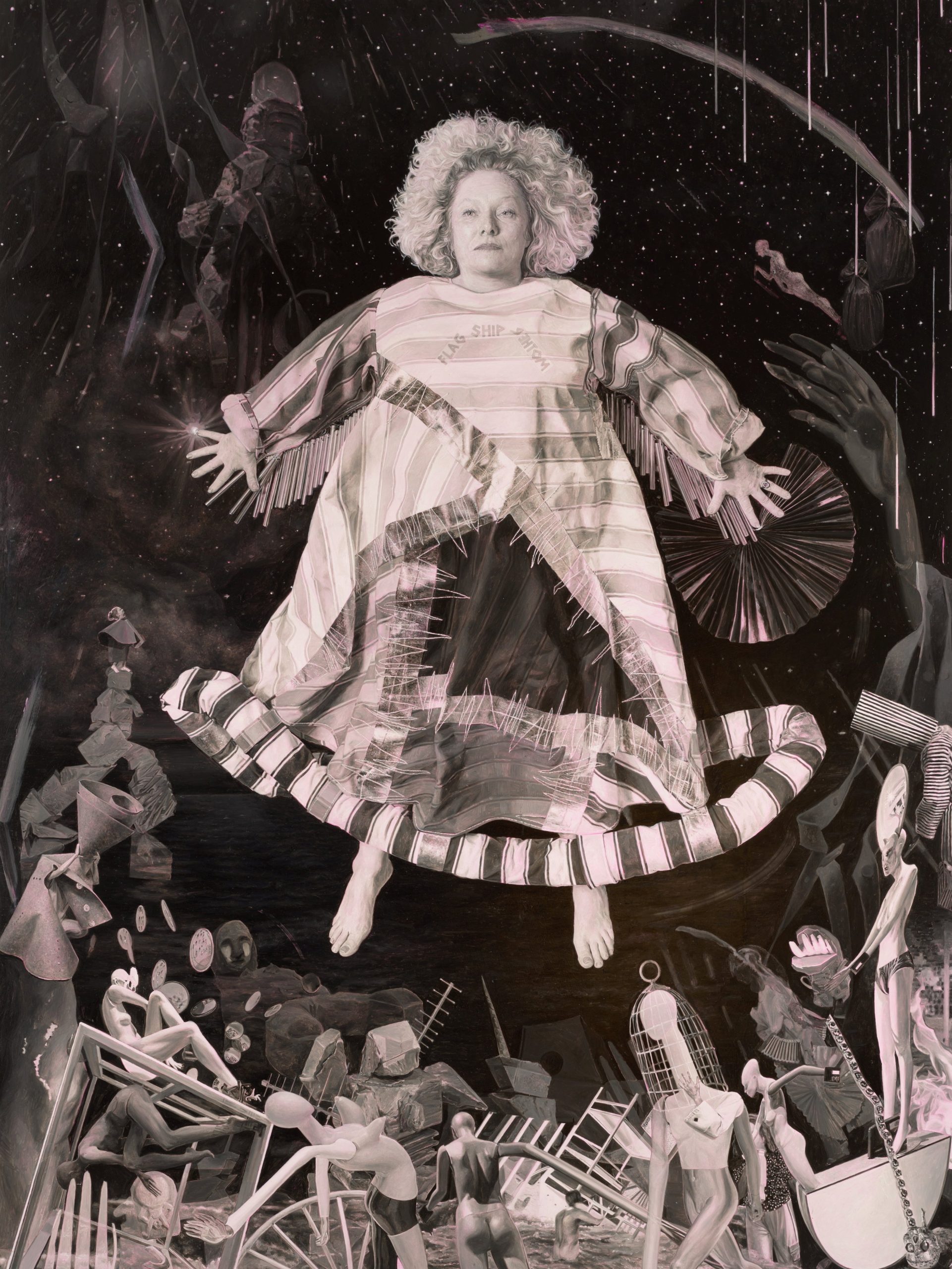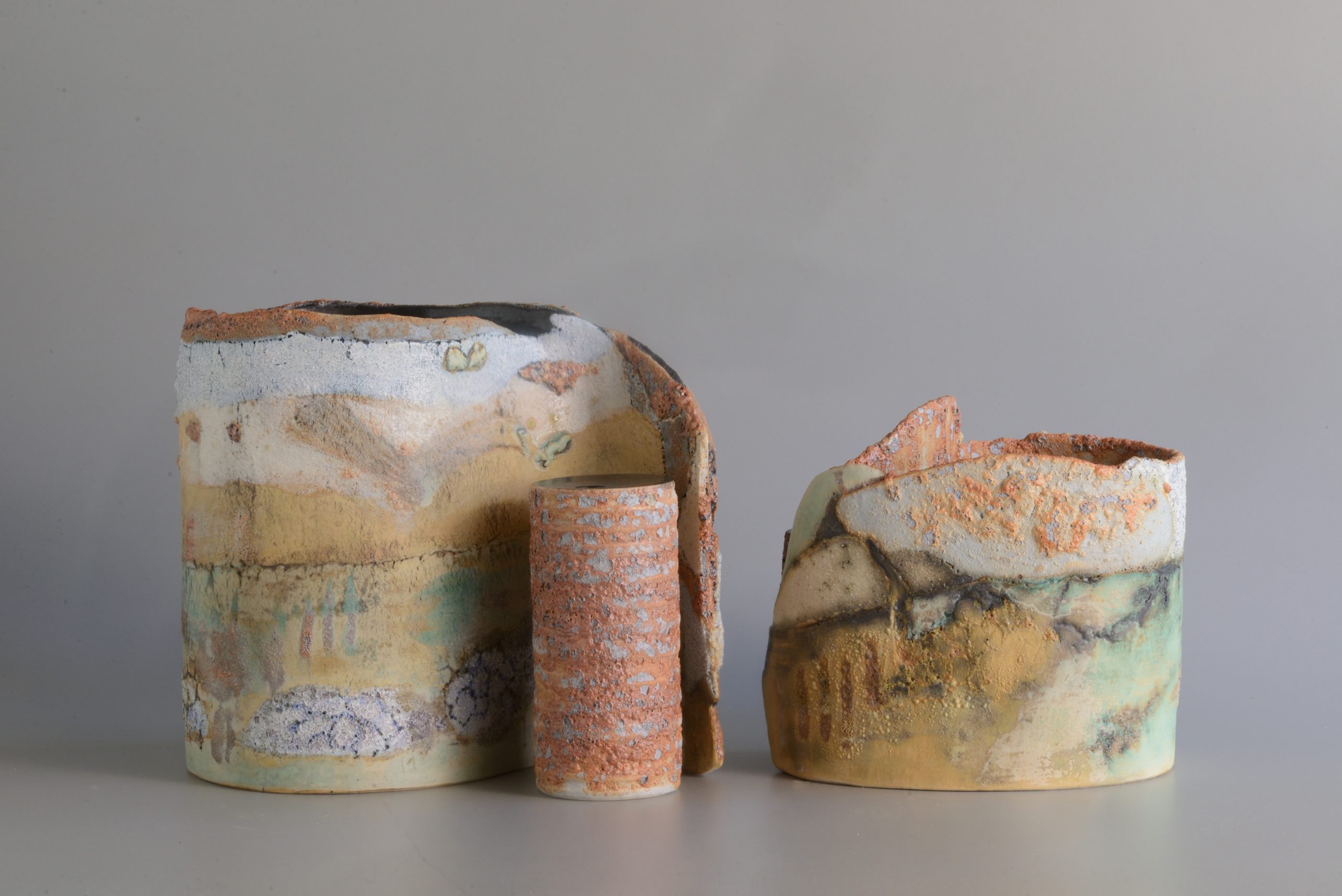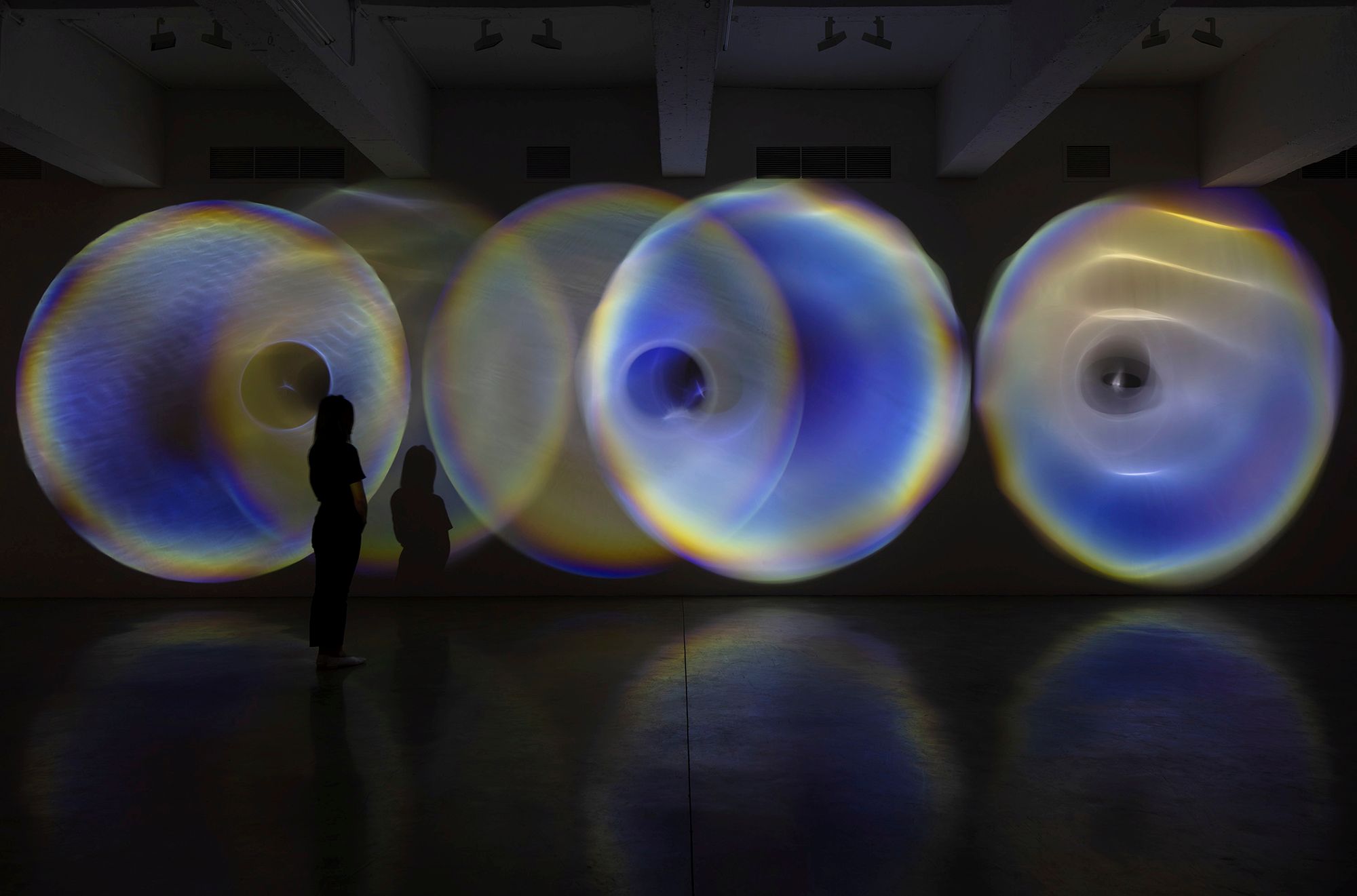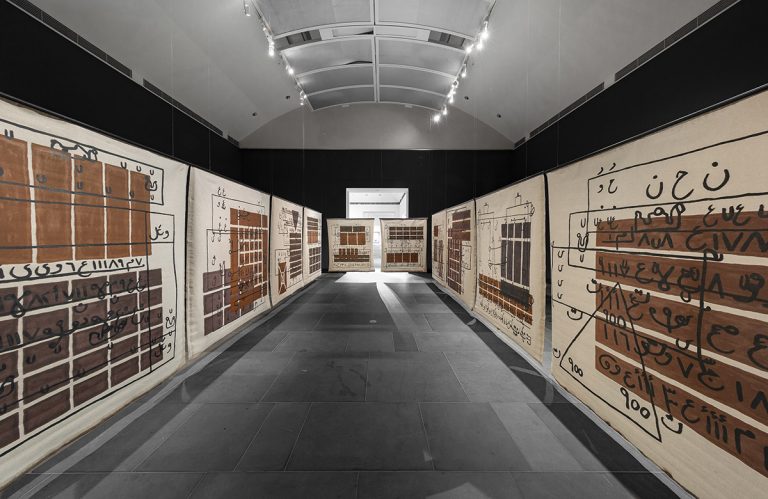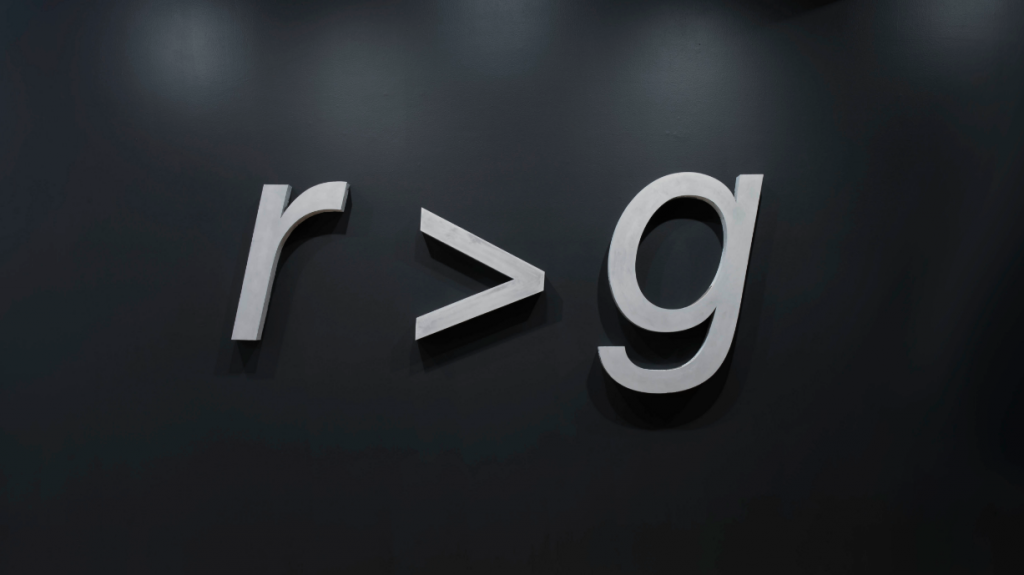
“Less is more”, architect Ludwig Mies van der Rohe’s oft-quoted and appropriately sparse mantra goes. In contemporary art practice especially, it seems that sophistication is the result of simplicity. The current exhibition at QUT Art Museum Less Than: Art and Reductionism primarily explores art made from 1960 that takes a visually reductive approach to image making, although what is it that these artists have removed, and for what reason(s)?
The exhibition consists of four distinct focuses over four rooms. The first room consists of monochromatic objects, many consisting of or arranged in a grid and made using materials designed for commercial purposes. An appropriate introduction to the exhibition is Ian Burn’s Systematically altered photographs (1968), tourist images copied until they have become degraded simulacra of the ‘originals’ above. In this section the characters of a sobering economics equation are at first sight abstracted and yet given objecthood in Daniel McKewen’s Kafka on the shore (2014), whereas Alex Seton’s Contempra (White) (2006) and Sam Cranstoun’s Proposal for long term sustainability; Plano, II (2012) allude to something larger than the objects themselves.
The second and largest space is filled with colour, and more so than other sections presents works that suggest infinite iterations. Peter Atkins’s Hume Highway Project (2010) consists of 12 colour screen prints which allude to the form of roadside signs and suggest endless variations, as does Gemma Smith’s Boulder #3 (2009), a non-symmetrical geometric object made from triangles of acrylic varying in shape, size and colour.
The third section consists of works that employ earthly colours or materials. Immediately greeting viewers is Rosalie Gascoigne’s Grassfest (1999), slivers of wooden soft drink crates arranged on a square base followed by Rover Thomas’s rich and solid Cyclone Tracy (1996) painted with coloured ochre. Where artists in other sections of the exhibition have used refined materials to produce reductionist works, in this section the reductionism is doubled with many objects made with unrefined materials directly from nature.
In a full loop, the final room returns to monochromatic objects, some gestural and others geometric. Most striking in their simplicity were Christian Capurro’s Breathfalls #1-5 (2011), consisting of varnish and correction fluid on polycarbonate discs. The combined materials seem to mix and disperse however they like, resulting in strange celestial forms in dark portholes.
I return to my question of what the artists have removed and for what reason(s). The scope of the exhibition, 1960 onwards, encompasses a number of movements that have been pivotal in the direction of contemporary art practice such as minimalism and conceptual art, as well as representing a turbulent socio-political section of time not far from collective memory. One of the necessary processes of reductionism is the disavowal of socio-political content, at least visually. As opposed to consisting of only explicitly socially relevant art, and works being used as ‘artefacts’ of historical events (which some institutions seem to do, narrowing the reception and subsequent scholar), the reductionist art in Less Than documents artists’ ongoing commitment to aesthetics and, according to Kant, the subsequent necessity of indirection to maintain a position of moral disengagement. Yet far from being completely detached from the events of the time, the dates and titles of some works have become highly charged, and it was not impossible to imagine the images the artists were turning away from, choosing not to represent or instead represent through indirection. As W.J.T. Mitchell states, “prohibit something from being shown, hide it away from view and its power as a concealed image outstrips anything that could have been achieved by being shown.” 1 However personal, self referential or resistant to narrativisation, the almost empty picture planes of some works from turbulent moments in recent history, in part, operated in this way.
Nevertheless, what was overwhelmingly conscious experiencing these reductionist works was the role that the didactics played in revealing and withholding information about them. Some works were given short paragraphs containing information that I felt that I should be aware of (both to engage with the work and in general, particularly Daniel McKewen’s Kafka on the shore (2014)). Other didactics contained only the usual objective details; artist, year, title, date, materials. Particularly unencumbered was Trevor Vickers’s Untitled (2003), which deliberately resists any reading outside of its physical properties and presence in space. The result was an irresolvable curiosity of what the works without didactic paragraph were concerned with (that is, if anything outside of themselves) and reinforced that reductive art’s visual opacity gives both artists and curators more agency over the information that a work of art conceals or reveals, as opposed to less reductive and more didactic approaches such as social realism. By foregoing easily identified intentionality as well as familiar symbols and signifiers, not only can artists explore their ideas in private and create works with greater curatorial flexibility, but also create a void of meaning which is filled with the subjectivities of whoever is looking, exponentially increasing the ways in which the work may be engaged with, both cognitively and affectively. In other words, less really can be more.
Written by Aaron Butt
1 Mitchell, W.J.T. 2011. “The Unspeakable And The Unimaginable: Word and Image in a Time of Terror” In September 11, edited by Peter Eleey, 168-189. New York: MOMA PS1.
Image: Daniel MCKEWEN – Kafka on the shore, 2014. Gypsum and acrylic polymer.
Essay written for the exhibition ‘Less Than: Art and Reductionism’ at QUT Art Museum (18th March – 21st May).

